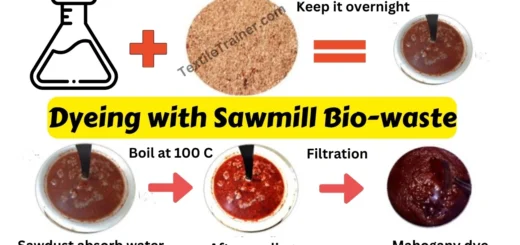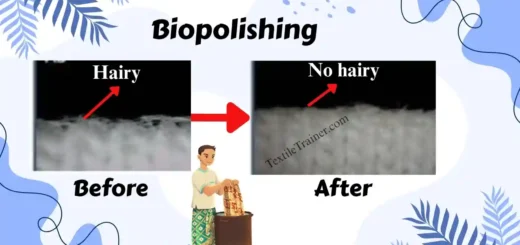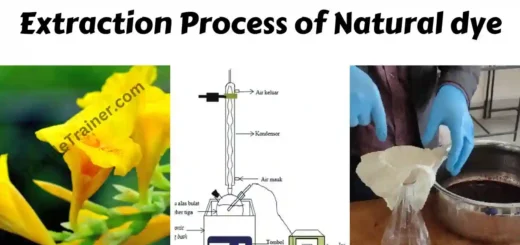10 Waterless Dyeing Technique: Sustainable Textile Dyeing

Introduction
The textile industry has faced growing pressure to reduce water consumption and pollution in its pursuit of sustainability. The waterless dyeing technique is one of the most groundbreaking innovations for addressing this issue. It is transforming the way we color fabric—minimizing environmental harm while maintaining quality and efficiency. However, before going to the main topic, let’s come to learn the definition of waterless dyeing.
What is Waterless Dyeing Technique?
Waterless dyeing is the process of dyeing fiber or fabric without using water or by using significantly less water. It is an emerging technology currently being applied in the textile industry. This innovation may open a new era in textile history. Waterless dyeing technology often replace water with alternative medium.
Importance of Waterless dyeing
Following mentioned some importance of waterless dyeing:
- In conventional dyeing process, about 100-150 liters of water use to process 1 kg fabric.But, Waterless dyeing technique remarkable reduces water usage.
- Waterless dyeing prevents the release of toxic wastewater into rivers as well as soil. So, it is protecting ecosystems of the world.
- Waterless textile process often require fewer chemicals. Hence, these process reduces chemical cost.
- This systems use less energy owing to the shorter process times. So, it minimize the utility cost.
- This innovation uses advanced technology like supercritical CO2 dyeing provide excellent dye penetration. Therefore, it provides excellent colorfastness properties.
Different Waterless Dyeing Technology
There are several types of waterless dyeing technologies used in the textile industry.Textile specialists as well as many researchers are continuously searching to find out new methods. That new method reduce water consumption and minimize environmental pollution. Some of the most commonly 10 practiced waterless dyeing techniques are outlined below:
1. Dye Coo
DyeCoo Textile System B.V. founded in 2008 and base in the Netherlands. It is the first commercial supplier of industrial scale waterless dyeing equipment. There developed method known as “DyeCoo”. In DyeCoo method, liquid CO2 is use for dyeing. Initially, CO2 is transformed to liquid form in the vessel by the help of heat and pressure. After dyeing, CO2 is allowed to leave the vessel in gaseous state. Some companies, such as IKEA, NIKE etc have adopted this method.
Some companies, such as IKEA and NIKE, have adopted this method

2. Air Dye
Air Dye is an another waterless dyeing technique developed by Colorep Inc. In this innovation method, dyestuff are transferred onto the fabric in a gaseous state, which temporarily opens the fiber structure. Once the dyeing process is finish, the fabric structure returns to its original form. Additionally, this process uses specialized software to enure high color accuracy. One of the most important advantages of this technique is that it allows not only the outer yarn surface but also the inner filament to be evenly dyed. Hence, it gives deep and consistent coloration as well as excellent colorfastness properties.

3. Air Flow Dyeing Machine
Air flow dyeing machine is an another advanced textile dyeing system. This machine is significantly reduces water usage during fabric processing. In traditional dyeing process where fabric is transported through dye liquor or water based mediums. But in air flow dyeing machine uses high pressure air to circulate or move the fabric instead of water in the dyeing chamber. As result, the need of large volume of water to carry the fabric eliminates. Here, water is used for only making the dye solution. Liquor ratio try to keep as low as 1:3. Hence, these method can reduce water consumption by up to 53% compared to conventional dyeing method.
However, in this method, dye liquor is applied in the form of a fine mist or spray and ensure uniform dye penetration with minimal liquid. As there is no excess water is required for fabric movement, the process drastically reduces water, energy, and chemical consumption.

4. Green Dye
Karl Mayer has developed an Eco-friendly indigo dyeing technology known as Green Dye. In traditional indigo dyeing process, sodium hydrosulfite is used as a reducing agent. But sodium hydrosulfite is a toxic, harmful to environment. Additionally, oxidation reaction often occur directly in the dye bath. Hence, it lead to dye loss and instability. Dyeing process is carried out in a nitrogen atmosphere in Green Dye process. Nitrogen is inert, non-reactive, and abundantly available. A high concentration of indigo dye is injected by the newly developed machine in a nitrogen-heavy environment. Hence, dye molecular diffuse and migrate more intensely compared to conventional dyeing process.

5. Poly Reactive Dye
Poly Reactive dyes which is contain multiple reactive groups. These multiple reactive groups allows them to form strong covalent bonds with textile fiber. To cited an example, AVITERA® SE dyes have three reactive groups, which remarkably improve their performances. These dyes are perfect for cellulosic fibers. It has rapid and high dye fixation rates, as well as superior diffusion. Owning to their special properties, less dye is wasted, less water is required. These dyes not only save water but also save chemical cost.

6. Supercritical Fluid Dyeing
A supercritical fluid is a substance that exists at a temperature and pressure about its critical point, where the distinction between liquid and gas phase disappears. it exhibits properties of both a gas and liquid- it flows like a gas but has density similar to a liquid, allowing it to effectively dissolve materials. It has low viscosity, high diffusivity, no surface tension like a gas. For example CO₂, Nitrogen (N₂) , Xenon or Nitrous Oxide (N₂O) a may be used as supercritical fluid.
Here CO₂ is common and many company are already start production by using this. Nitrogen (N₂), Xenon or Nitrous Oxide (N₂O) less common supercritical fluid. More experiment is needed due to solubility, effectiveness, high costs and safety concerns at using the less common (N₂,N₂O) fluid.

7. Spray Dyeing
Spray method is used in this dyeing process. Initially, the dyeing solution is prepared. Then, the fabric is placed under the dyeing machine. Subsequently, the dye solution is sprayed according to the machine’s instruction. After dyeing, the machine’s nozzle, pipes, and other parts are washed with fresh water. this method uses less time and water compared to conventional dyeing process.

8. Plasma dyeing
Plasma is an electrically charged or ionized state of an atom or molecule. In textile technology, plasma treatment is used to modify the surface of non-polar fabrics like polyester and polypropylene. This method is enabling the fiber to be dyed with ionic dye. This treatment introduces new functional groups onto the fabric surface, altering properties such as wet-ability and allowing for thin film deposition, which further modifies the fabric for improved dye-ability and performance.

9. Dip Dyeing
In the garments industry, dip dyeing is gaining popularity. It is also known as tip dyeing or gradient dyeing. In this method, dye is prepared in a vessel, or any suitable container and fabric or yarn is immersed in the dye solution by hanging or using other mechanisms, depending on the desired design. A special dyeing recipe is used for this process. binding agents, salt, wetting agents, and leveling agents are commonly applied to ensure proper dye absorption and fixation. Dip dyeing is known for its time efficiency and low water consumption. Beside, dip dyeing makes an attractive option for both creative and sustainable textile production.

10. Water mixed with other medium
Water mixed with other medium is an another dyeing technique. In this process, less amount of water is mixed with other liquid such as Paraffin , Palm oil etc . The water percentage may be 1%-10% with the liquid which give highest k/s value. Without water it possible but the shade is lower. If some water is added then get the deep shade. In most developing country, many researcher are practicing this process.

Benefits of Waterless Dyeing Technique
Benefits of waterless dyeing techniques is given below:
- Waterless dyeing techniques offers almost zero water waste.
- It has lower energy usage and faster dyeing time.
- This technique has high color uniformity.
- Waterless textile process offers better worker and environmental safety.
- It also supports circular fashion goals.
Challenges of Waterless Dyeing Technology
Though waterless dyeing technology has lots of benefits, but it faces several challenges.
- Initially, waterless dyeing technology need high investment.
- It has limitation with natural fibers e.g., cotton
- Waterless textile process need high skilled labor and specialized equipment.
Conclusion
Now a days, there is an increased demand for fresh water . By applying waterless dyeing techniques, a large amount of clean water may be conserved. Practicing water less dyeing is important for every company in textile manufacturing to shift to sustainable and eco-friendly processes. After all, fashion and environmental consciousness go hand-in-hand. The future of waterless dyeing technologies looks promising and is here to stay.
Reference
- M. T. Abate and M. G. Tadesse, “Airflow, Foam, and Supercritical Carbon Dioxide Dyeing Technologies,” Innov. Emerg. Technol. Text. Dye. Finish., no. August, pp. 137–164, 2021, doi: 10.1002/9781119710288.ch5.
- I. Mahmud and S. Kaiser, “Recent progress in waterless textile dyeing,” J. Text. Sci. Eng., vol. 10, no. 6, pp. 1–3, 2020, doi: 10.37421/jtese.2020.10.421.
- M. Blessing, “Waterless Dyeing Techniques : Transforming Textile Manufacturing for Sustainability,” no. December, 2024.
- A. N. M. A. Haque and M. Naebe, “Zero-water discharge and rapid natural dyeing of wool by plasma-assisted spray-dyeing,” J. Clean. Prod., vol. 402, no. January, 2023, doi: 10.1016/j.jclepro.2023.136807.
- https://www.karlmayer.com
- https://fyitester. com
- https://www.bhg. com



